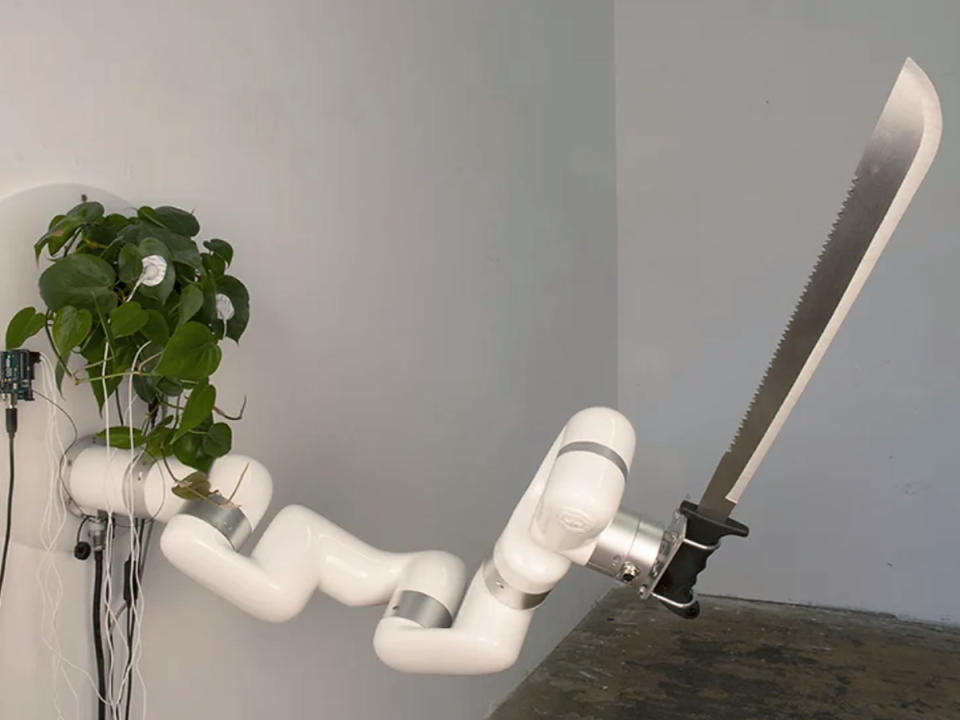Houseplant controls machete with robotic arm

An inventor has created a machete-wielding robotic arm that is controlled by signals generated by a living plant.
The first-of-its-kind installation, dubbed the ‘Plant Machete’, works by reading electrical noises from a common philodendron houseplant through sensors attached to its leaves.
These signals are then translated into real-time motion for the arm, allowing it to jab, slice and swing the weapon in its grip.
Designer David Bowen set up the Plant Machete as a demonstration of how a plant can act as a “brain” for a robot, allowing it to interact with the world in a way that would have been technologically impossible just a few years ago.
“The system uses an open source micro-controller connected to the plant to read varying resistance signals across the plant’s leaves,” Mr Bowen explained in a description for a video showing off the technology.
“Using custom software, these signals are mapped in real-time to the movements of the joints of the industrial robot holding a machete. In this way, the movements of the machete are determined based on input from the plant.”
The invention, first reported by Designboom, forms part of an emerging field of autonomously-controlled robots, which typically focuses on signals and gestures from humans and other animals.
Earlier this year, a partially paralysed man was able to feed himself for the first time in 30 years without help from a carer after using a robotic arm connected to a brain-computer interface.
The man was able to manipulate a knife and fork held by separate robotic arms using just his mind in order to cut food and bring it to his mouth.
The team at John Hopkins Applied Physics Laboratory in the US who built the system are currently developing an even more advanced version that could allow amputees to transform feelings for a phantom limb into real-world movements of a robotic prosthetic.

 Yahoo Finance
Yahoo Finance 